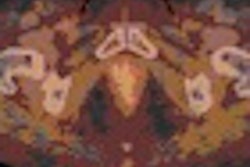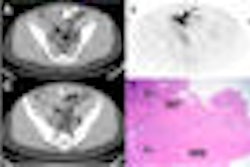Dear Molecular Imaging Insider,
Being an Insider subscriber, you have an exclusive first look at a new study from Swiss researchers -- they found that fluorine-18 dihydroxyphenylalanine (F-18 DOPA) contrast-enhanced PET/CT is "significantly superior" to DOPA PET and contrast-enhanced CT in detecting neuroendocrine tumors.
Based on the additional information DOPA PET/CT provides, researchers changed therapy for 26% of the patients in the prospective study, and they concluded that DOPA PET/CT has the potential to further improve staging and therapy in patients with neuroendocrine tumors. Read more about this study by clicking here.
Also in this issue of the Insider, researchers at the Mayo Clinic have found that PET/CT is "very helpful" in detecting cancer in patents with suspected paraneoplastic neurological disorders, when other imaging modalities and clinical exams find no evidence of cancer. Read all about the study, published this week in Archives of Neurology, by clicking here.
We're also highlighting a new study published online this week in The Lancet. With the help of FDG-PET, researchers at the Feinstein Institute for Medical Research have developed an automated image-based classification procedure to differentiate patients with idiopathic Parkinson's disease, multiple system atrophy, and progressive supranuclear palsy. They concluded that the process has "high specificity in distinguishing between Parkinsonian disorders and could help in selecting treatment for early-stage patients and identifying participants for clinical trials."
In related research, we also have the results of a four-year study measuring the effectiveness of dopamine cell transplantation in Parkinson's disease patients, which was found to produce significant improvements in motor skills and brain function. The results were published in the latest issue of the Journal of Nuclear Medicine.
In other features, nuclear medicine physicians and radiologists are facing some competition from endocrinologsists, who are handling more therapeutic radioiodine procedures for hyperthyroidism and thyroid cancer. Researchers from Thomas Jefferson University in Philadelphia have more details on why the trend is happening.
And, finally, a new study from the Cleveland Clinic says physicians should consider a second FDG-PET scan to help localize seizure origin in patients with refractory epilepsy whose initial images show regional hypermetabolism. The findings also suggest that it may be worthwhile to repeat the FDG-PET exam if no regions of hypometabolism are found, but an electroencephalogram uncovers frequent spiking activity.
Be sure to make the Molecular Imaging Digital Community part of your daily routine to stay informed about the latest in research and healthcare news.




















